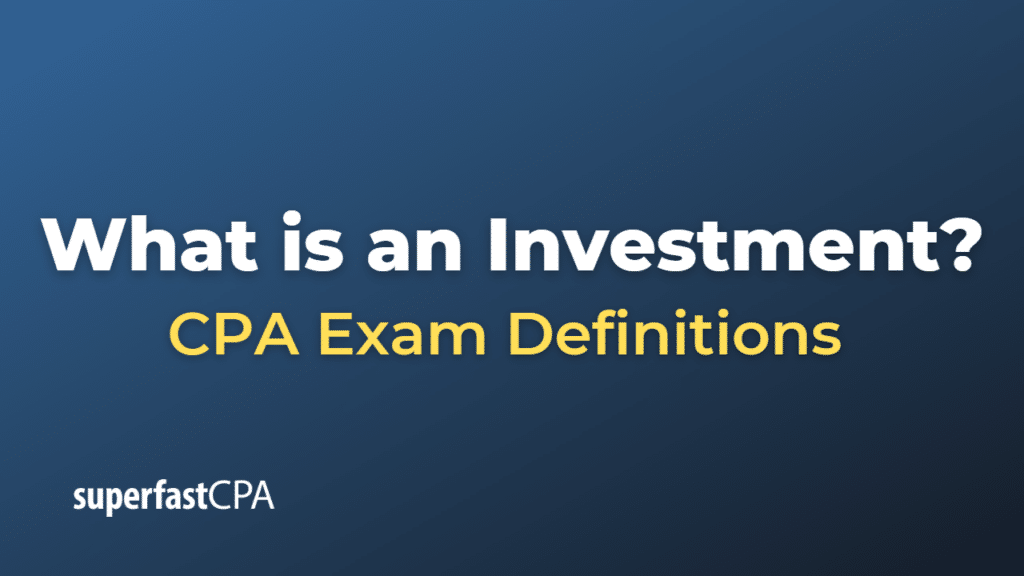Investment
An investment is the act of allocating resources, typically money, with the expectation of generating an income or profit in the future. The resources that you put in are called the investment’s “principal” or “capital.”
There are many forms of investment, including:
- Stocks: Buying shares of a company’s stock represents ownership in the company and gives the shareholder a claim on part of the company’s assets and earnings.
- Bonds: Bonds are essentially loans to a government or corporation, where the borrower agrees to pay back the loan with a certain interest rate at a specified time.
- Mutual Funds and ETFs: These are investment funds that pool money from many investors to invest in a diversified portfolio of stocks, bonds, or other assets.
- Real Estate: This can be residential or commercial properties. The owner makes money through rent or through the property’s value appreciating over time.
- Private Equity or Venture Capital: These involve investing in companies that are not publicly traded, typically with the expectation of significant growth.
- Commodities: Commodities include physical assets like gold, oil, natural gas, agricultural products, etc.
- Certificates of Deposit (CDs) and Money Market Accounts: These are typically low-risk investments offered by banks with a fixed interest rate.
- Retirement Accounts: Investment vehicles such as 401(k)s and IRAs, which provide tax advantages for retirement savings.
- Forex and Cryptocurrencies: Investing in foreign currencies and digital currencies also constitute forms of investment.
The goal of investment is to put your money to work in one or more types of investment vehicles in the hopes of growing your money over time. However, it’s important to note that all investments come with varying degrees of risk, and it’s possible to lose some or all of the money you invest. Therefore, careful consideration and often diversification of investments can help manage and mitigate these risks.
Example of an Investment
Let’s consider an example of an investment in the stock market.
Let’s say you have $10,000 that you’d like to invest. After doing some research, you decide to invest in the shares of a tech company, say, “TechVentures Inc.”.
Currently, TechVentures Inc. shares are trading at $50 per share. With your $10,000, you can buy 200 shares of the company (10,000 / 50 = 200).
Now, two main scenarios can occur:
- The stock price increases: Let’s say over the next year, TechVentures Inc. performs really well and the price per share increases to $60. If you decide to sell your shares, you would receive $12,000 (200 shares * $60/share), realizing a gain of $2,000 on your initial investment. This profit is why you made the investment.
- The stock price decreases: On the other hand, if TechVentures Inc. does not perform as well as expected and the stock price drops to $40 per share, your investment would now be worth $8,000 (200 shares * $40/share). This represents a loss of $2,000 on your initial investment.
This example demonstrates the potential for both profit and loss when investing. Therefore, while investing can be a great way to increase your wealth over time, it’s also crucial to do thorough research and consider the risks. For many people, diversifying their investments across a variety of different assets can be a good strategy to spread risk and potentially increase returns.
Remember, it’s always a good idea to consult with a financial advisor or do your own research before making significant investment decisions.









